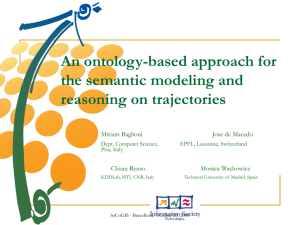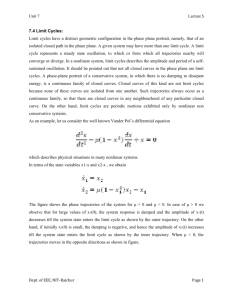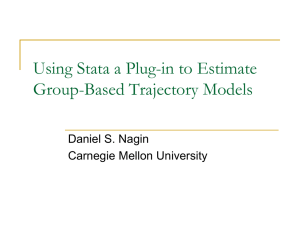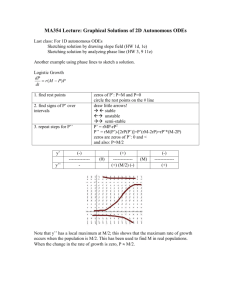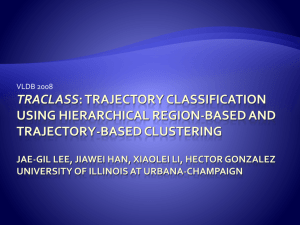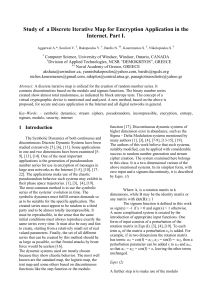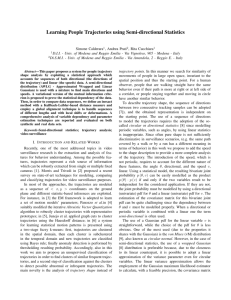TSS Back Trajectory Modeling June 2011
advertisement
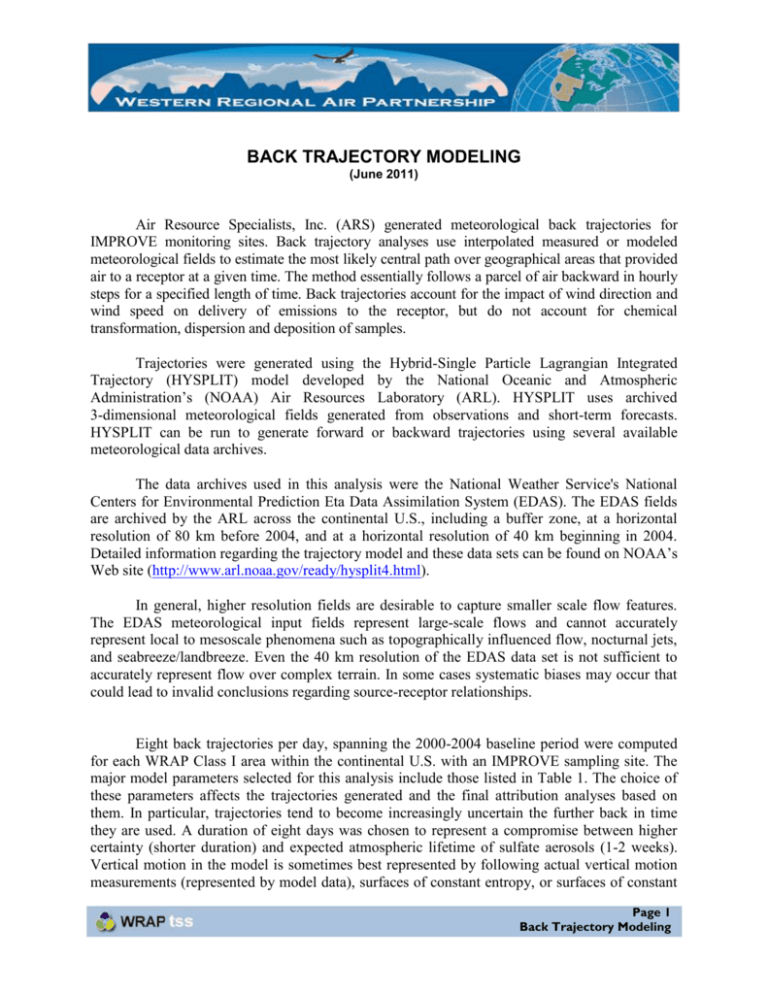
BACK TRAJECTORY MODELING (June 2011) Air Resource Specialists, Inc. (ARS) generated meteorological back trajectories for IMPROVE monitoring sites. Back trajectory analyses use interpolated measured or modeled meteorological fields to estimate the most likely central path over geographical areas that provided air to a receptor at a given time. The method essentially follows a parcel of air backward in hourly steps for a specified length of time. Back trajectories account for the impact of wind direction and wind speed on delivery of emissions to the receptor, but do not account for chemical transformation, dispersion and deposition of samples. Trajectories were generated using the Hybrid-Single Particle Lagrangian Integrated Trajectory (HYSPLIT) model developed by the National Oceanic and Atmospheric Administration’s (NOAA) Air Resources Laboratory (ARL). HYSPLIT uses archived 3-dimensional meteorological fields generated from observations and short-term forecasts. HYSPLIT can be run to generate forward or backward trajectories using several available meteorological data archives. The data archives used in this analysis were the National Weather Service's National Centers for Environmental Prediction Eta Data Assimilation System (EDAS). The EDAS fields are archived by the ARL across the continental U.S., including a buffer zone, at a horizontal resolution of 80 km before 2004, and at a horizontal resolution of 40 km beginning in 2004. Detailed information regarding the trajectory model and these data sets can be found on NOAA’s Web site (http://www.arl.noaa.gov/ready/hysplit4.html). In general, higher resolution fields are desirable to capture smaller scale flow features. The EDAS meteorological input fields represent large-scale flows and cannot accurately represent local to mesoscale phenomena such as topographically influenced flow, nocturnal jets, and seabreeze/landbreeze. Even the 40 km resolution of the EDAS data set is not sufficient to accurately represent flow over complex terrain. In some cases systematic biases may occur that could lead to invalid conclusions regarding source-receptor relationships. Eight back trajectories per day, spanning the 2000-2004 baseline period were computed for each WRAP Class I area within the continental U.S. with an IMPROVE sampling site. The major model parameters selected for this analysis include those listed in Table 1. The choice of these parameters affects the trajectories generated and the final attribution analyses based on them. In particular, trajectories tend to become increasingly uncertain the further back in time they are used. A duration of eight days was chosen to represent a compromise between higher certainty (shorter duration) and expected atmospheric lifetime of sulfate aerosols (1-2 weeks). Vertical motion in the model is sometimes best represented by following actual vertical motion measurements (represented by model data), surfaces of constant entropy, or surfaces of constant Page 1 Back Trajectory Modeling pressure, depending on the meteorological conditions at a given location and time. The impact of receptor height (or end height) on an individual trajectory is also important. Low-ending trajectories represent air parcels nearer ground level, and consequently nearer the ground-based samplers. High-ending trajectories may represent more accurate boundary layer flow above the local terrain. Trajectory heights are not constant throughout the trajectory duration and often vary considerably from the receptor height selected. Consequently, trajectories generated for the same location and time but with different receptor heights may indicate significantly different flow patterns for part of or the entire trajectory. The choice of different meteorological fields can yield dissimilar result as well. Table 1 HYSPLIT Back Trajectory Model Parameters Selected for WRAP Analysis Model Parameter Trajectory Duration Top of Model Domain Vertical Motion Option Meteorological Field End Height End Times Value 192 hours (8 days) backward in time 14,000 meters used model data EDAS 500 meters 0000, 0300, 0600, 0900, 1200, 1500, 1800, and 2100 (local standard time) Residence time maps were constructed for the annual 20% worst extinction days using 2000-2004 back trajectories. The 20% worst days were determined using the IMPROVE RHR2 (revised IMPROVE algorithm, updated 3/06) data set. Residence time analysis computes the amount of time (e.g., number of hours) or percent of time an air parcel is in a horizontal grid cell. Each hourly point for back trajectories with end dates corresponding to the 20% worst visibility days was counted and summed into 1-degree horizontal grid cells of latitude and longitude. The percent of hourly points in each grid cell was calculated and mapped using color gradients, where darker colors indicate regions where air parcels spent the most time before reaching IMPROVE monitors. A sample residence time map is presented in Figure 1. The values associated with each color in the map legend are normalized to the maximum percentage value observed, which is generally the grid cell where the receptor site resides. Residence time over an area is indicative of general flow patterns, but does not necessarily imply the area contributed significantly to haze compounds at a receptor site since it does not account for emissions and removal processes. Residence time maps should be used in conjunction with emissions information to relate emissions and transport to components of haze at the receptor sites. The 5-year residence time fields were used by the Attribution of Haze project’s Weighted Emissions Potential analysis, which can be found on the TSS Haze Planning page, by following the Emissions and Source Apportionment link. Page 2 Back Trajectory Modeling Figure 1. Back trajectory residence time map for Great Sand Dunes NP. The total residence time is presented in percent for 1-degree grid cells. The model parameters used to generate the back trajectories for this map are described in the text. Page 3 Back Trajectory Modeling


